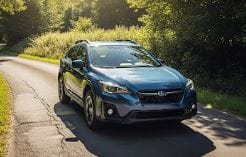The BMW i8, produced from 2014 to 2020, is a plug-in hybrid sports car that combines futuristic design with innovative hybrid technology. Its fuel economy varies based on driving habits, driving mode, and whether the vehicle is operating in electric-only or hybrid mode.
🚗 Official Fuel Economy Ratings
EPA Ratings (U.S. Market)
The U.S. Environmental Protection Agency (EPA) provides the following fuel economy estimates for the BMW i8
| Driving Mode | Fuel Economy Rating |
|---|---|
| Gasoline Only | 28 MPG City / 29 MPG Highway |
| Electric Only | 76 MPGe (Miles Per Gallon Equivalent) |
| Combined | 70 MPGe (Combined) |
Note: MPGe is a measure of the average distance traveled per unit of energy consumed, used to compare the energy consumption of electric and hybrid vehicles to that of gasoline-powered vehicles.
⚙️ Real-World Fuel Economy
While official ratings provide a baseline, real-world fuel economy can differ based on driving conditions and habits. Owners have reported varying fuel economy figures:
- Highway Driving: Some owners have achieved around 35 MPGe during extended highway driving .
- City Driving: In urban settings, electric-only driving can be utilized, enhancing efficiency.
📊 Comparative Fuel Economy
To understand how the BMW i8 compares to other vehicles, consider the following table:
| Vehicle Model | Fuel Economy (Combined) |
|---|---|
| BMW i8 | 70 MPGe |
| Tesla Model S | 102 MPGe |
| Chevrolet Volt | 106 MPGe |
| Toyota Prius | 56 MPG |
Note: The Tesla Model S and Chevrolet Volt are electric and plug-in hybrid vehicles, respectively, offering higher MPGe ratings.
BMW i8 Real User Reviews: Fuel Economy & Mileage
The BMW i8 is a futuristic plug-in hybrid sports car. Many enthusiasts and potential buyers are curious about its real-world fuel economy. Below are actual user reviews and experiences regarding the i8’s mileage.
“Highway Efficiency” – Fully Charged Review
Fuel Economy: 44 MPG
Details: A reviewer reported achieving an average of 44 MPG during highway driving. Electric-only range was around 34 miles, and long trips were possible without frequent recharging.
Source: Fully Charged“Sport Mode Consumption” – BimmerPost Forum
Fuel Economy: 36.4 MPG
Details: Driving in Sport mode reduces fuel economy. A forum user reported 36.4 MPG average, highlighting how driving style affects efficiency.
“Long-Term Ownership” – CAR Magazine
Fuel Economy: 35 MPG
Details: Long-term ownership reports show an average fuel economy of 35 MPG over mixed city and highway driving. Users noted that the hybrid system helps maintain consistent efficiency.
Source: CAR MagazineConclusion
The BMW i8 balances performance and fuel efficiency uniquely. Real-world user experiences show that mileage depends heavily on driving habits, terrain, and mode selection. While not as efficient as fully electric vehicles, the i8 offers a practical plug-in hybrid experience with impressive range for a sports car.
🔋 Electric-Only Range
The BMW i8 offers an electric-only driving range, which varies by model year:
- Early Models (2014–2017): Approximately 15 miles on a full charge.Reddit
- Later Models (2018–2020): Improved to about 22 miles on a full charge .
Note: Actual electric-only range can vary based on driving conditions and battery health.
Factors Affecting Fuel Economy
Several factors can influence the fuel economy of the BMW i8:
- Driving Mode: Selecting between “Comfort,” “Eco Pro,” and “Sport” modes can impact fuel efficiency.
- Driving Habits: Aggressive acceleration and high speeds can reduce fuel economy.
- Terrain: Hilly or mountainous terrain can decrease efficiency due to increased energy consumption.Wikipedia
- Climate: Extreme temperatures can affect battery performance and fuel efficiency.







